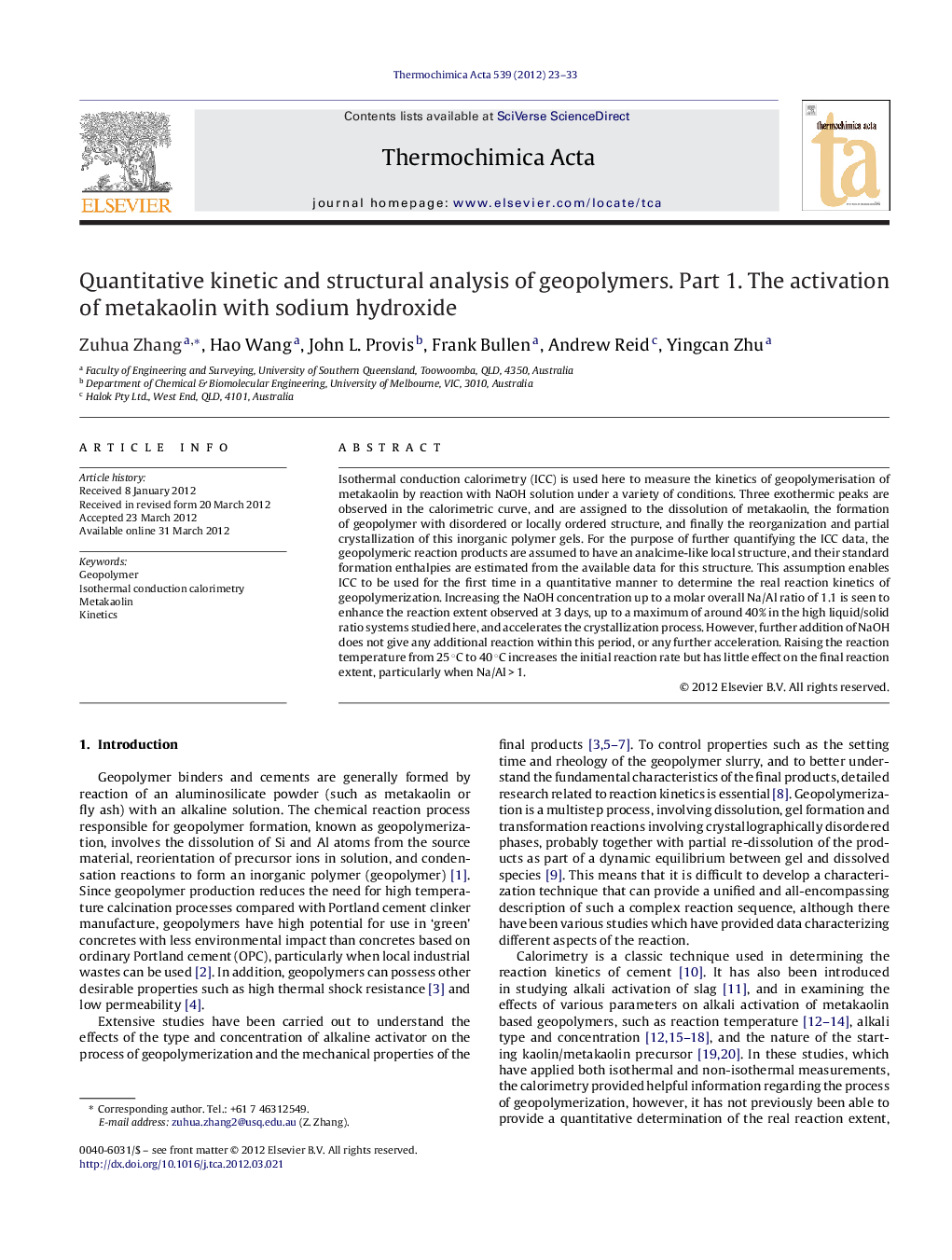| کد مقاله | کد نشریه | سال انتشار | مقاله انگلیسی | نسخه تمام متن |
|---|---|---|---|---|
| 674154 | 1459545 | 2012 | 11 صفحه PDF | دانلود رایگان |

Isothermal conduction calorimetry (ICC) is used here to measure the kinetics of geopolymerisation of metakaolin by reaction with NaOH solution under a variety of conditions. Three exothermic peaks are observed in the calorimetric curve, and are assigned to the dissolution of metakaolin, the formation of geopolymer with disordered or locally ordered structure, and finally the reorganization and partial crystallization of this inorganic polymer gels. For the purpose of further quantifying the ICC data, the geopolymeric reaction products are assumed to have an analcime-like local structure, and their standard formation enthalpies are estimated from the available data for this structure. This assumption enables ICC to be used for the first time in a quantitative manner to determine the real reaction kinetics of geopolymerization. Increasing the NaOH concentration up to a molar overall Na/Al ratio of 1.1 is seen to enhance the reaction extent observed at 3 days, up to a maximum of around 40% in the high liquid/solid ratio systems studied here, and accelerates the crystallization process. However, further addition of NaOH does not give any additional reaction within this period, or any further acceleration. Raising the reaction temperature from 25 °C to 40 °C increases the initial reaction rate but has little effect on the final reaction extent, particularly when Na/Al > 1.
► Isothermal conduction calorimetry is used to qualify the real reaction extent of geopolymerization.
► Increasing the NaOH concentration enhances the reaction extent up to 40% and accelerates the crystallization process.
► Raising the reaction temperature from 25 °C to 40 °C increases the reaction rate but has little effect on the final reaction extent.
Journal: Thermochimica Acta - Volume 539, 10 July 2012, Pages 23–33